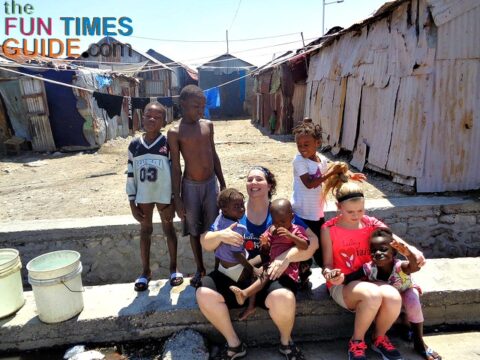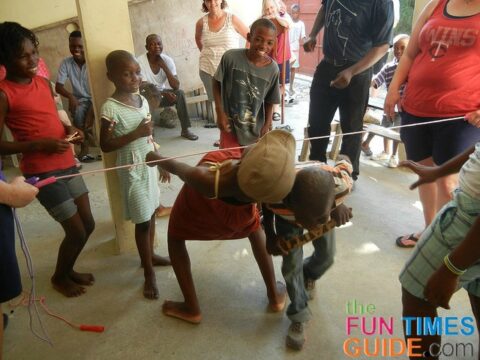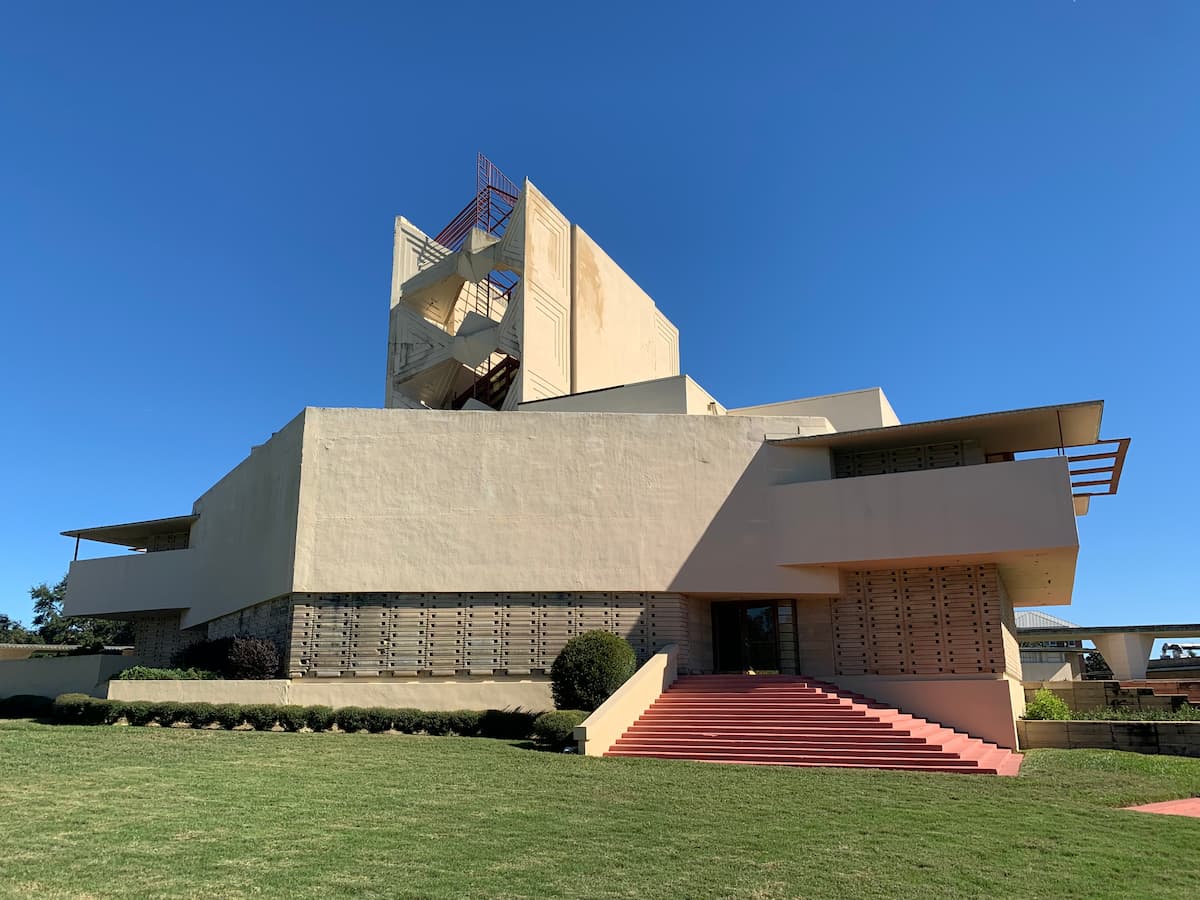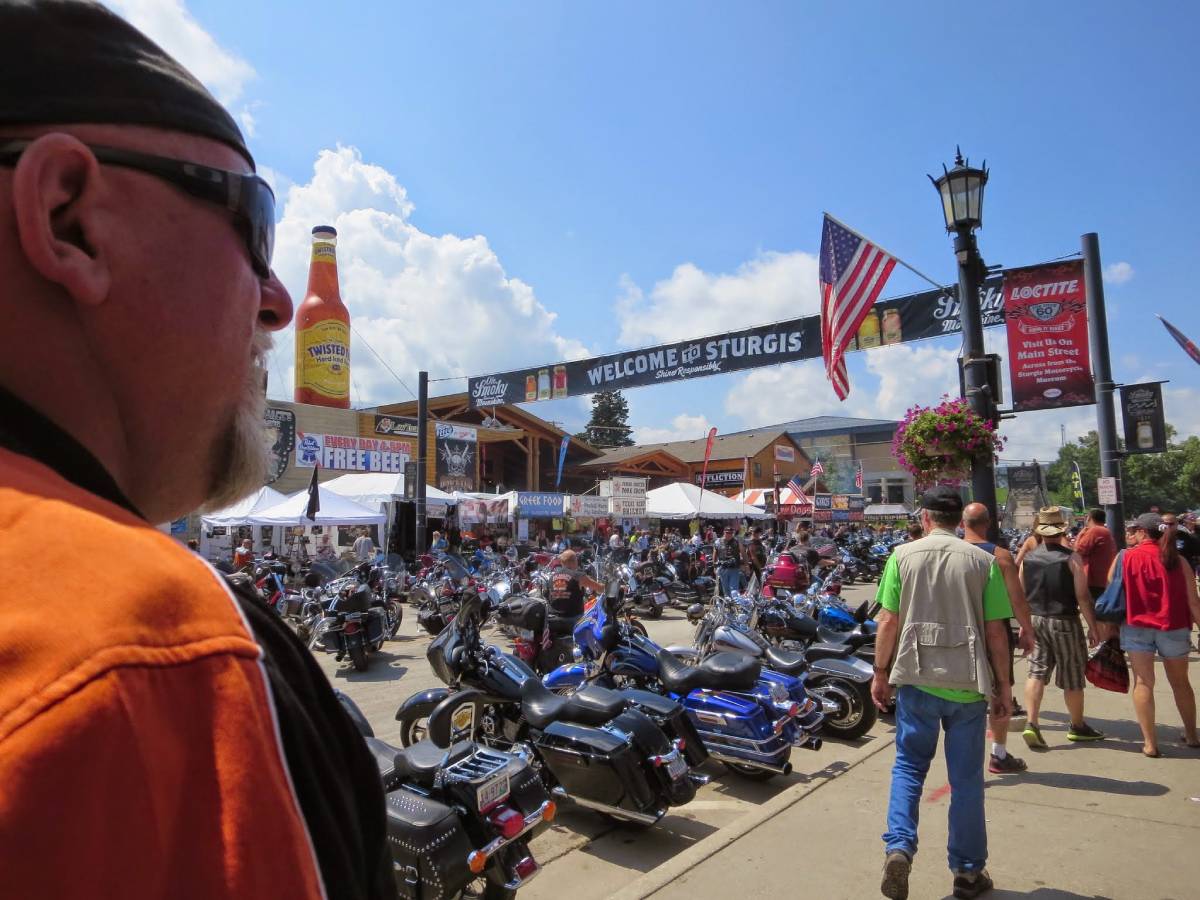Volunteer mission trips are a great way to help people and make a difference in the world.
I decided to go on a week-long mission trip to Haiti about 3 months before the trip. Turns out that’s pretty good timing for all the things you need to do (and consider) before the trip.
My research and this article refer specifically to my trip to Haiti – with a Christian organization – but there are opportunities with secular organizations as well.
For example:
Projects Abroad is a secular organization. Projects Abroad is not affiliated with any political or religious organization, nor is it affiliated with any creed or faith. Projects Abroad is 100% funded by the program fees that are paid by the volunteers themselves. We accept volunteers from all around the world, embracing a very wide range of backgrounds and beliefs. We believe that this diversity makes our programs more productive and enriching for every volunteer involved. In the long run, we sincerely want to bring more cross-cultural understanding into the world. Source
There are also many opportunities to volunteer with mission trips in the United States.
Following are my best tips to help you prepare for a volunteer mission trip…
How To Choose A Group To Travel With
I was invited to join a friend who was traveling with Healing Haiti.
As I did my research of this organization, I realized this organization met my 3 most important criteria:
- They were an established group and had been facilitating week-long trips in Haiti for nearly 10 years.
- Safety of the group was stressed as a priority.
- Empowering local Haitians through employment opportunities and as resources is part of their mission.
There are many reputable organizations that host volunteer mission trips. So if your church or other groups are not affiliated with one, you can use the Internet to find one that will work for you.
Must read: Tips For Your First Short-Term Mission Trip
Each organization will have a unique mission and focus that will drive the events for your group. Be sure to choose one that will meet your individual goals, strengths, and skills.
Learn All You Can Before You Go
Healing Haiti requires an online application, which is forwarded to the group leaders for consideration. If you’re accepted, you may need to pay a reservation fee (mine was $100) to confirm your spot on the trip. This fee will be applied to your overall trip expenses.
Carefully read all the online materials about your trip. (Healing Haiti has a great “Short Term Mission Trip Guide” full of helpful information that’s only available to accepted team members.)
Attend all group meetings prior to the trip, if you can. I was a long-distance member and joined in via Skype. I was able to ask all of my questions, as well as hear the questions asked by my team members. There was also a closed Facebook page for all group members to post information and questions.
Another reason I really like Healing Haiti: they make sure the short-term missionaries (volunteers) understand that what you will be doing during your week of service is how Healing Haiti works toward meeting their overall, long-term goals. While they definitely want to help you have a good experience while you’re there, they are clearly “using” volunteers like us to help fulfill their mission.
This was important to me – because I didn’t want my contributions to be a “one and done” kind of thing for the people of Haiti. Healing Haiti has standing obligations in Haiti, and my service will assist those efforts.
Be sure to ask questions before you apply for a volunteer mission trip. And be aware of the physical requirements for the trip and any special accommodations – if you need them.
Try To Find Out Ahead Of Time What You Will Do There
The activities during your trip will be different for each organization – based on their individual mission statements. For example, the focus of the organization may be:
- medical
- evangelical
- service
- health
- environmental
- construction
For Healing Haiti, the driving motivation is to help break the cycle of poverty and strengthen families and communities by empowering the Haitian people with job and education opportunities – rather than simply doing things for them, or giving things to them.
Here are some of the things I did on my trip:
Water delivery to Cite Soleil, the poorest slum in the Americas – Healing Haiti delivers 63,000 gallons of fresh, clean water every week. The water is free, and for many is their only source of clean water. It is also a chance to play with the local children, giving them an assist with the water carry or just a break from the hot tedium of their days.
Mother Teresa’s Home for Sick and Dying – The only objective is to hold, play with, and
love on the babies and children who are hospitalized or housed here. Many of the children are left here by their parents because they simply cannot provide the food or care needed. They come to visit and hopefully plan to take the children home someday. Sadly, this is also the last stop for the sickest babies and children in Haiti. One sweet infant died while we were there, surrounded by the love and singing of many of the nurses and sisters.
Visits to orphanages – Healing Haiti works with many orphanages and rotates visits from week to week to share the love of the different visiting mission groups. The children love to play games (jump rope is a favorite), do crafts, sing and dance, braid hair, and anything else we could think of.
Grace Village, a truly special place created by Healing Haiti – It’s an orphanage for children who have been placed in a home with several children and a Mami and a Papi as parental figures. This helps the children begin to understand how a family structure is supposed to work – hoping that one day they will be able to have their own family. Grace Village also has a school, clinic, feeding center, church and a new bakery/restaurant – which will provide new jobs for 400 Haitians!
Elder visits – Healing Haiti has a program for people to provide monetary support for elders living in the rural village of Titanyen. Again, on a rotating basis, mission groups spend time with 3 or 4 elders. We took them a cold drink and a hot meal, companionship, singing and prayers, and any other items the person needed.
As a volunteer in Haiti, we also:
- Saw the Museum of Haiti
- Visited the Haitian Initiative (provides soccer and food for children living in Cite Soleil)
- Relaxed at a swimming pool at a nearby hotel
- Ate at a local Haitian restaurant
- Shopped at Apparent Project
- Attended Church at Grace Village and enjoyed an afternoon at a beautiful beach resort on our final day
Expenses For The Trip – What You Can Expect
There will be several types of expenses for your week-long trip.
You can utilize fundraising techniques to assist your own financial contributions.
Possible expenses – based on my Healing Haiti mission trip:
- Organization fees = $850 (included guest house lodging, all local transportation/interpreters/guards, 2 meals per day, etc.)
- Airfare/airport parking = $780
- Passport = $180 (cost of a new one)
- Travel insurance/volunteer card = $30 (this was related to emergency medical/evacuation situations, not cancelled trip insurance)
- Travel shots and medication = $50 (my health insurance covered all other costs)
- Appropriate shoes and clothing = $200
- Suggested cash for shopping and other expenses* = $200 to $300 (we were told to bring American money, no need to exchange for Haitian money. All bills had to be crisp and untorn; ripped or wrinkled bills were not accepted.)
*My expenses that needed to be cash: $10 entry at airport, $3 per visit to nearby hotel for swimming (this included a cold beverage), $5 entry to museum, $50 tip money for guest house staff/cooks and drivers (the amount is optional), $10 entry to beach resort and souvenir shopping (some places accepted credit cards and some did not)
Make sure you fully understand what your “trip fees” will be used for. In my case, the $850 was used for the expenses listed above, and anything over that went towards Healing Haiti general needs. (I was totally comfortable with that and was able to explain how Healing Haiti uses those funds.)
Fundraising Tips
Use the Internet to find creative ways to raise money for your mission trip – there are a million articles like this that will have great ideas.
Here’s what I did for my fundraising efforts for the Haiti mission trip:
- I sent a letter of information to family and friends, asking for prayer for my trip as well as monetary donations
- Healing Haiti provides a web link for direct donations, and I personalized this with a picture and copy of my letter
- I sent a Facebook post to all my contacts, including my letter and a direct link for donations
- I made phone call appeals to special friends and family who wanted to have more details about the trip
- I also set up a donation box at work to collect the requested items
- I sent thank you letters to everyone who donated, including a photo collage from my trip
Be prepared to answer a wide variety of questions about your trip. Most people were very interested in my trip and were genuinely supportive with their questions.
Some people were hearing about Haiti mission trips for the first time and asked other questions that you may want to know the answers to in advance:
- What exactly will you be doing there?
- You don’t have a medical background, how can you help?
- Have you ever built a house before?
- Why go all the way to Haiti when there are needy children in America?
- I’ve heard money donated to those countries gets wasted and doesn’t really help the people, what about that?
Do the best you can to answer their questions, and be honest if you don’t know. After all, you’re doing this to learn some things yourself!
You may run into people who are convinced that volunteer missions are a waste of time and possibly even hurtful to the host country. This article may help you respond to these detractors. But remember, it’s not your responsibility to change anyone’s mind about volunteer mission trips. This will be a good opportunity to share what you’ve learned and give them something new to think about.
Packing List For Volunteer Mission Trips
What you need to pack and wear will be dictated by the culture you will be in and the activities on your organization’s agenda.
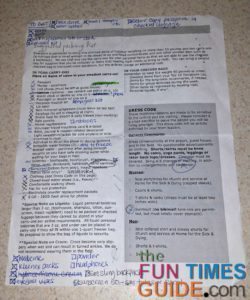
Clarify any questions you have with your group leaders during the team meetings. For example, one question I had:
The dress code for women’s shorts says they must be knee-length. Because I’m kind of tall, that would pretty much mean Capri pants – which I didn’t want to wear in blazing hot Haiti.
So I asked during a meeting and was told that as long as my shorts are longer than my fingertips, I’d be okay. That made a big difference to me, and I found some shorts that worked and did not need to wear Capri’s. Several people did wear Capri pants – which was totally fine, and I respect their choice to do so.
The guest house we were in had a pretty good pantry of over-the-counter medicines, as well as a good supply of sunscreen and bug spray. I took my own supplies of all of these (mostly in small travel sizes). Next time, I will take full-size bottles and plan to leave behind anything not used – which is how their supply gets replenished.
I found myself with way too many small packs of Kleenex, eyeglass cleaner, hand sanitizer, and other random things. For my next trip, I will carefully reconsider my original packing list and try to cut it down. I was worried that I would find myself in a developing country and suddenly need [insert random toiletry item here] and not be able to get it. Chances are, the guest house supply or another traveler will have what you’d need. If not, the group leaders are wonderful about doing their best to get whatever someone needs.
For Healing Haiti, each group member is asked to use their one checked bag solely for requested donation items. That meant all of my personal items and clothes would go only in the carry-on items. For my trip on American Airlines, my carry-on items were 1 small bag that can fit in the overhead bin and 1 “personal item” (a backpack). Be sure to confirm your airline’s bag measurements for both checked and carry-on luggage – because it varies by airline.
Healing Haiti also made it known that if the checked bag could be left in Haiti, it would be put to good use. Some group members picked up cheap bags from Goodwill or Craigslist and did plan to leave them behind. Several others (and I) chose to use our own bags and bring them back with us.
What About Doing Laundry?
Check with the organization to see what your laundry options will be.
At the Healing Haiti guest houses, the Haitian ladies who run the house were happy to do our laundry. We would leave dirty clothes each evening, and they would be returned usually within 2 days.
When I learned that the ladies do the laundry by hand, I personally chose to keep my laundry to a minimum. Only when something was very dirty and I would need to wear it again would I ask the ladies to wash it.
I purposely took enough undergarments, so laundering would not be needed. Super smelly clothes went into a ziplock bag to fester until I could wash them at home. (Phew, that was a fun load of laundry!) I took many ziplock bags. We used them to arrange donation items, and I used some to pack liquids in my suitcase, so I had plenty on hand.
Healing Haiti works with local orphanages, hospitals, and other organizations to identify needed items that can be brought from the States. Our list included:
- Clorox wipes
- bars of soap
- full bottles of shampoo
- deodorant
- toothbrushes
- toothpaste
- children’s underwear
- feminine products
- cans of meat
- washcloths
They also needed some items would be used by the volunteer groups at the guest house – such as large bottles of hand sanitizer and pancake syrup. All of these things were packed in the checked bags.
Shots and Medication
Your organization should recommend all of the travel shots and meds you will need, and you should confirm that with a travel clinic or doctor.
The medications will vary depending on your travel location. My doctor prescribed medication for:
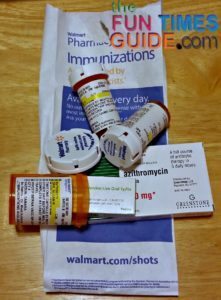
- Hepatitis B
- Malaria (TIP: Malaria medication makes you super sensitive to the sun!)
- Typhoid
- Flu
- Tetanus
- Z-Pack for traveler’s diarrhea
I also requested Diflucan (I tend to get yeast infections from certain antibiotics) and birth control (to help prevent my period during the trip). Be aware, there is a certain timing necessary for most of this medication, so check with your doctor as soon as possible. Some of the meds can be “fast tracked.”
Also make sure that you have appropriate amounts of your regular medications. All meds should be packed carefully in your carry-on luggage.
I had no side effects from any of the medications, and I (thankfully!) did not need to use the Z-pack or Diflucan. Some members of my group did have tummy trouble and started right away on the Z-pack antibiotics, while also taking Imodium. I would also recommend something like Excedrin or Ibuprofen for headaches – which may be brought on by the heat, or if you aren’t drinking as much water as you should.
If your location is hot and humid, drink more water than you think you need. Take it from me, you will sweat a lot and deplete your fluids.
Some Final Thoughts…
Don’t drink the water! If this is delivered as a caution to your group, take it seriously.
My group was provided with as much Culligan bottled water as we needed. Each day we filled 2 water bottles with this water to take in a cooler for our excursions. Plus there was a full Culligan bottle on our bus. We went to one restaurant where the water was known to be safe. Other than that, my rule was ‘drink no water not bottled by me’ as soon as I arrived in the Haiti airport. (The trickiest thing was brushing my teeth using bottled water!)
If you’re going to volunteer in Haiti, it will be HOT! And humid. And primarily not air-conditioned. For my entire trip, I had AC in my bedroom (during sleeping hours only) and when we went to the Museum of Haiti. That… is…it.
The airport in Port-au-Prince says it’s air conditioned, but I think they use that term loosely! Plan to drink plenty of water and take advantage of the breeze from your moving tap-tap (the primary mode of transportation in Haiti).
So do your research, update your passport, raise your money, get your meds, and get excited!
I fell in love with Haiti, had the experience of a lifetime, and met life-long friends. I hope your mission trip will do the same for you.
More Preparation Tips For Volunteer Mission Trips
- How To Choose A Volunteer Mission Trip That Is Right For You
- 10 Things You Should Know Before Going On A Volunteer Mission Trip
- Things People Don’t Tell You About Going On Mission Trips
- 7 Reasons You Should Say Yes To A Mission Trip
- Helping Without Hurting – a great video series to help you prepare for work with a Christian organization


